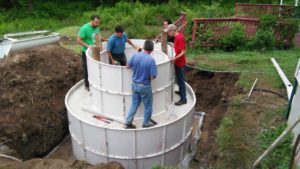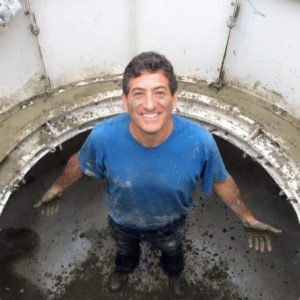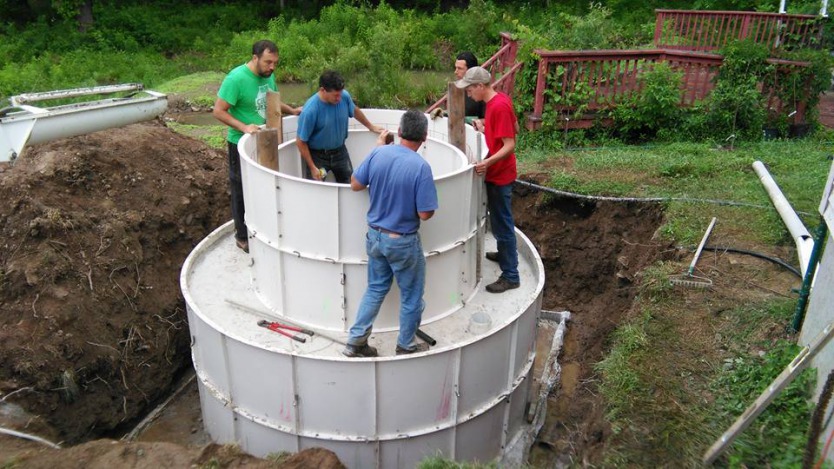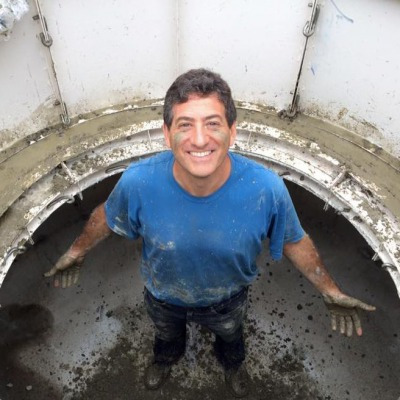
Members of Andrew Faust’s Permaculture community participate in the Solar CITIES Training and Build at his Center for Bioregional Living

June 19, 2015
Why is this guy smiling?
Because the Permaculture Movement in New York has embraced the Solar CITIES Biogas Movement. We joined forces to build the state’s first community-scale biodigester, a Solar CITIES variant of the 6m3 Puxin cement system.
We conducted the “wet build” installation at Andrew Faust’s “Center for Bioregional Living”. Two weeks earlier, we brought the molds up from Pennsylvania and did a “dry build” training in the parking lot to show the community what mold-based DIY biodigester systems are all about. Mold-based systems require assembly and disassembly of the molds. During this trip we also identified the best place to do the pour of the wet build.
We decided on a 6m3 system when digging last week with a backloader revealed that we could only go down seven feet before the water table turned the hole into a pond.
To fill in the rapidly waterlogged bottom of the hole, we had to make a square out of 1 x 6 boards into which we piled rocks, wooden boards, and gravel. When we could lay down sheets of rigid blue foam, we lined the whole thing with sheet plastic. Then we put in reinforcing steel mesh and brought in a truck to pour cement.
This resulted in a five-inch base slab sitting on top of about six inches of material on top of the rocks and gravel, giving us less than six feet of depth to work with.
Since a 10m3 system stands at about 9 feet, we had to leave the 4m3 ring out, decreasing the height by 16 inches to about seven feet, eight inches. Given the height of the sewer pipes coming out of the house, which stood a mere foot and half from the ground level, we realized that a six cubic meter system was the tallest we could go and still permit passive drainage of kitchen and toilet wastes into the tank.
Andrew Faust will integrate this build into his Permaculture Design Certificate courses at the Center for Bioregional Living. The digester will take all of the food waste from the Insinkerator Evolution 200 that we had donated to his center, plumbed into the main sewer pipe, as well as all grey water and toilet wastes.
It will be insulated with soy based Polyurethane donated by Lee Stoltzfus from Foam-Tech Insulation and data will be collected for winter performance.


